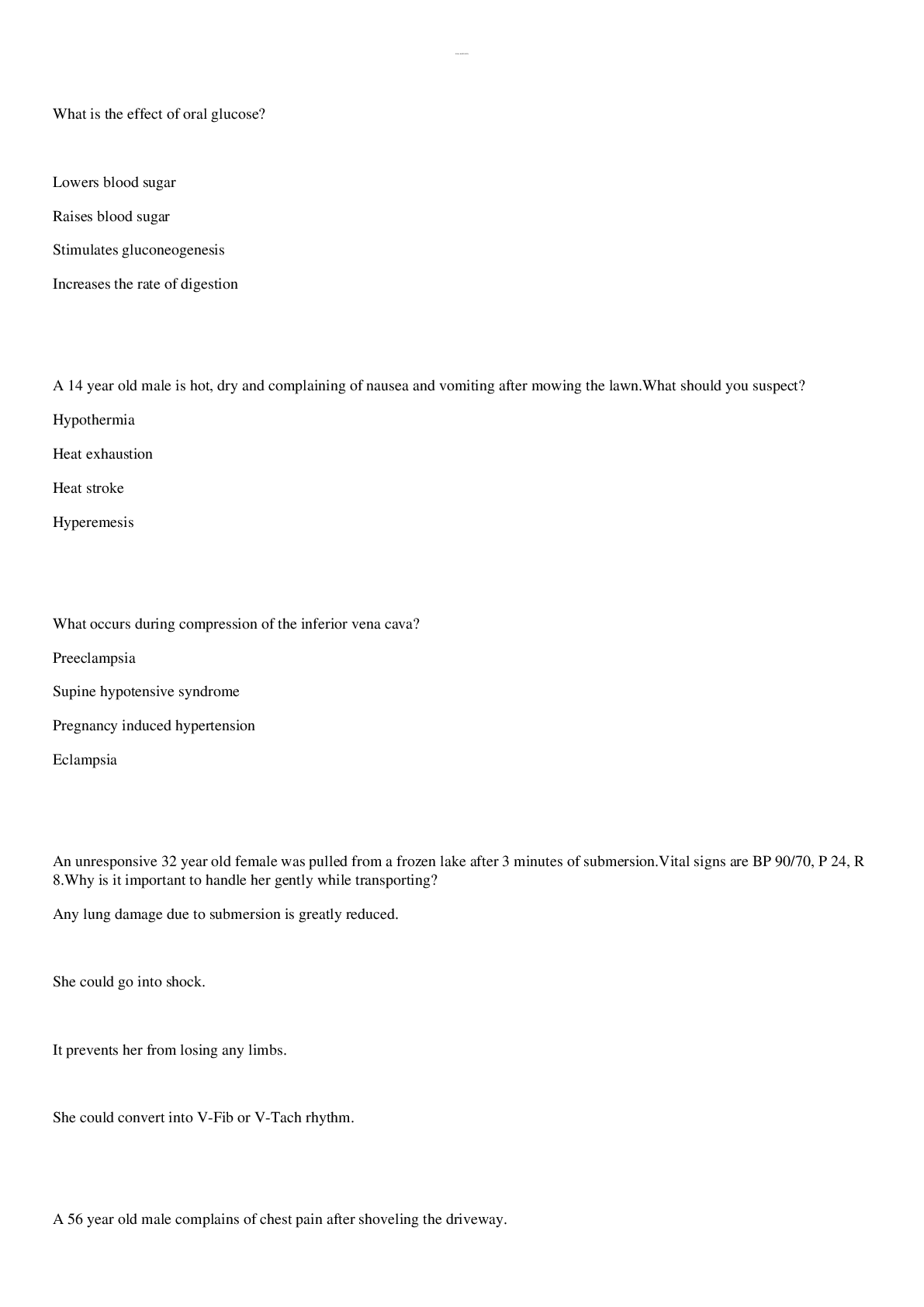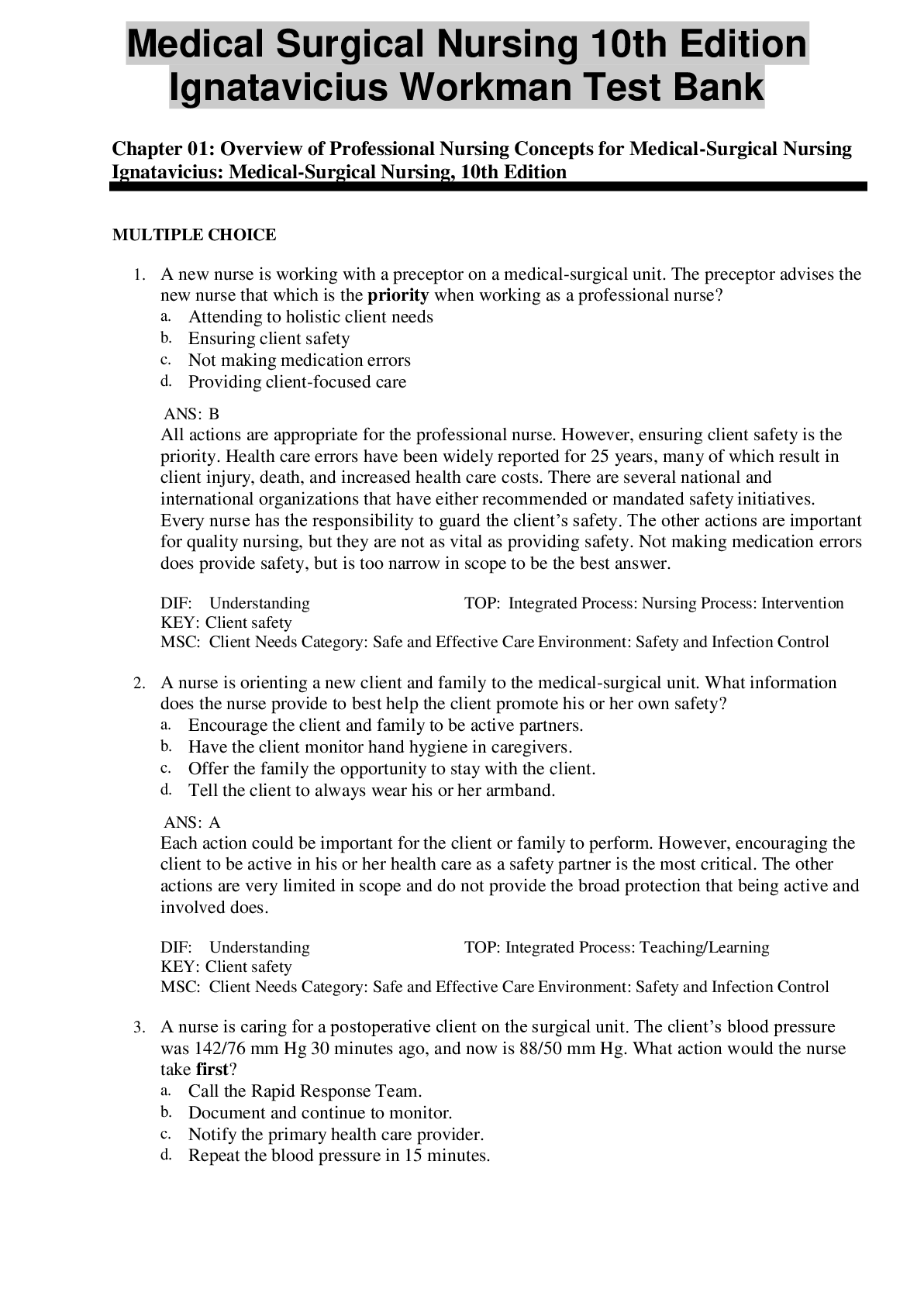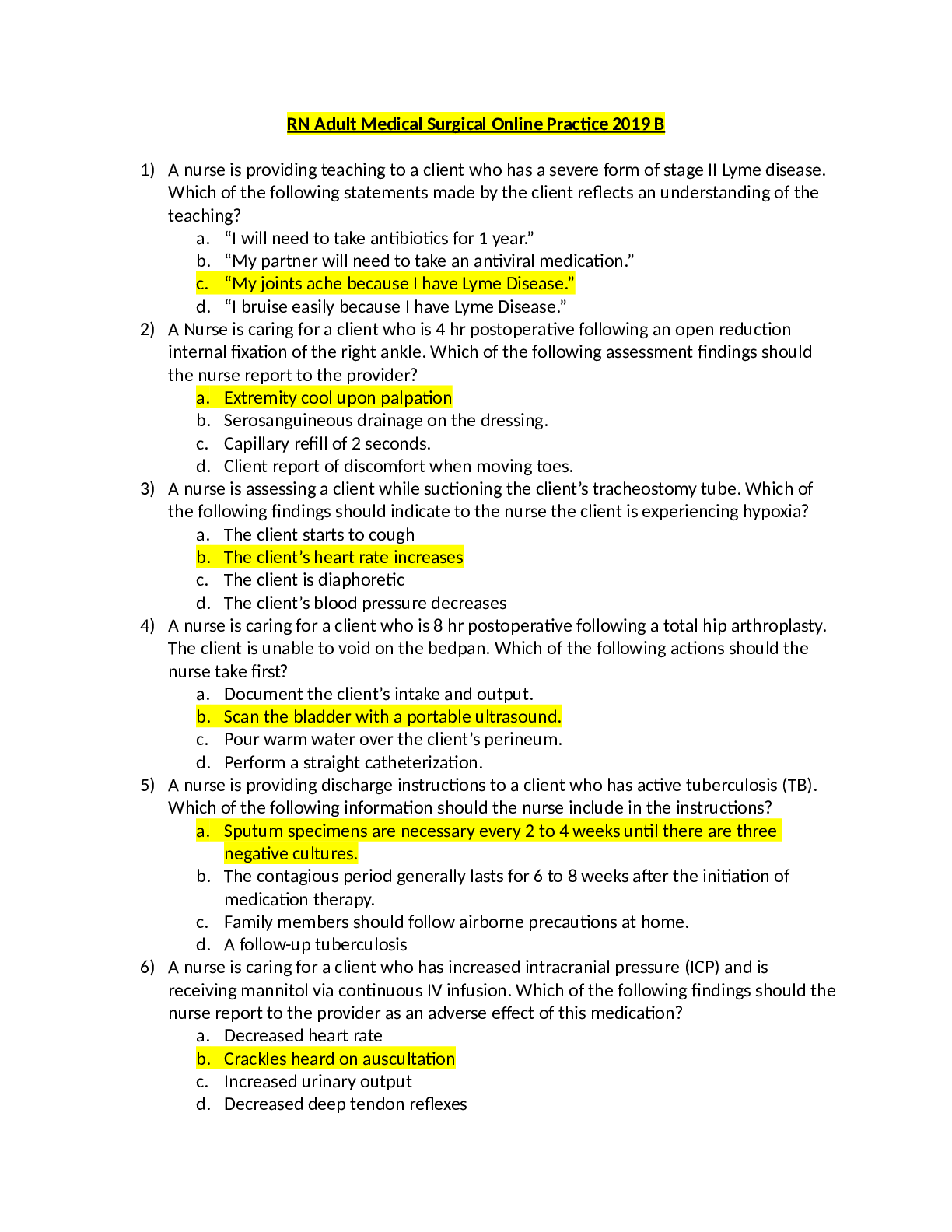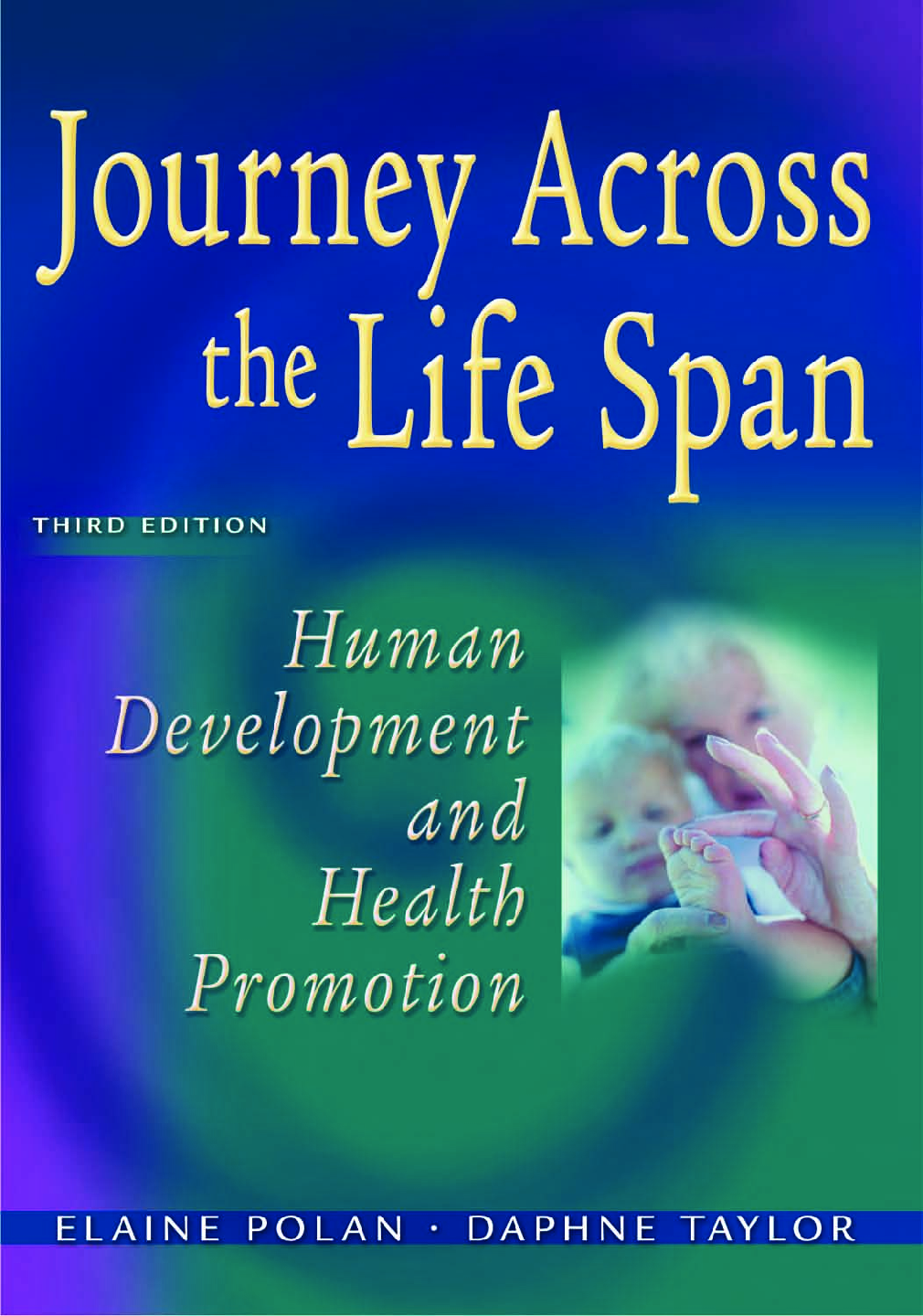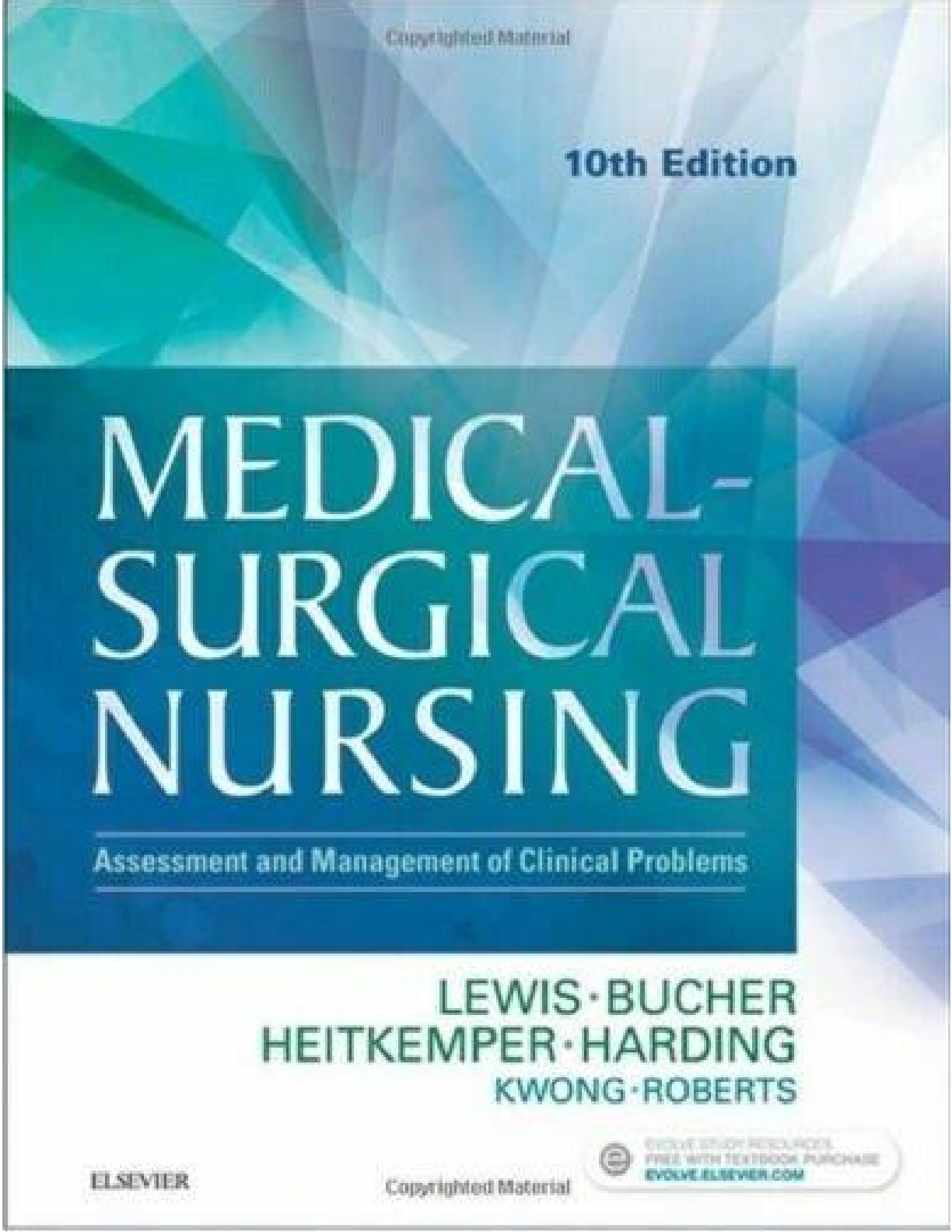Search for
Filter By
Rating
Price in $
Search Results 'Medical'
Showing All results
Sort by
*NURSING > TEST BANK > Lewis_s_Medical_Sugrical_Nursing_11th_Edition_Testbank (All)
Medical Studies > QUESTIONS & ANSWERS > DOT certification medical examiner test questions and answers graded A (All)
*NURSING > EXAM > Test Bank for Medical Surgical Nursing 7th Edition by Linton (2) (All)
*NURSING > EXAM > Assessment RN VATI Adult Medical Surgical 2023 (All)
*NURSING > EXAM > FISDAP MEDICAL EXAM LATEST 168 QUESTIONS AND ANSWERS!Rated A+ Answers (All)
Health Care > TEST BANK > Medical Surgical Nursing 10th Edition Ignatavicius Workman Test Bank (All)
*NURSING > MED-SURG EXAM > RN Adult Medical Surgical Online Practce 2019 B (All)
Biology > EXAM > Healthy LifestylesHISTORY OF HEALTH CARE Early civilization was concerned with health and diseases. Illness was often attributed to natural and supernatural forces. Sometimes illness was thought to be the result of some evil wrongdoing. Diseases were often warded off by incantations, magic, charms, or with the use of herb concoctions. At times, drastic measures were taken to rid the body of demons, such as beating, torturing, or starving the sick. Other cures relied on magic and folk remedies. Even primitive surgery existed before the advent of Greek medicine. In about the 6th century B.C., medical schools were established in Greece. Hippocrates was the first physician to believe that treatment should be based on the belief that nature had a strong healing component. Diet, exercise, and hygiene became important to treatment. Throughout the Middle Ages medicine and religion were interwoven and several plagues and epidemics killed millions of people. Understanding of disease processes did not occur until the development of bacteriology, which took place in the 19th century. Louis Pasteur, Robert Koch, and Joseph Lister are some of the important scientists who made significant contributions to the scientific understanding of health and disease during this time. During the 20th century, a major cause of death was infectious diseases, but environmental improvements in sanitation, water, and food supply helped improve quality of life. Between the years 1936 and 1954, the discovery and use of vaccines and antibiotics further reduced the number of deaths resulting from infectious diseases. Despite all of the improvements aimed at limiting the incidence and numbers of deaths from infectious diseases, several diseases surfaced or reappeared in the 20th century. Diseases such as tuberculosis and measles have resurfaced, and new infectious diseases such as human immunodeficiency virus (HIV)/acquired immunodeficiency syndrome (AIDS), the Ebola virus, and drug-resistant strains of organisms (Staphylococcus aureus, Streptococcus pneumoniae, and Salmonella) have become current health challenges facing the population. Many other achievements contribute to longevity and health. Improvements and advances in maternal and child care have led to decreases in maternal and infant mortality rates. Better nutrition and hygiene, and improved technology also have greatly reduced the risks to both mothers and infants during the first year after birth. Still the issue of having access to health care for all remains a concern. Large numbers of childbearing women do not seek out medical care during pregnancy, increasing the risk to themselves and their infants. Other areas of improvement include recognition of the risks associated with tobacco use, genetic counseling, motor vehicle safety, and advances in the diagnosis and treatment of heart disease and strokes. Improvements in the workplace regarding safety and job-related hazards have further reduced mortality rates. The mortality rate (death rate) today is lower than at any other time in history. The U.S. Department of Health and Human Services first published Healthy People 2000. Building upon the objectives first identified, Healthy People 2010 now continues in its belief in a systematic approach to improving health. This latest publication includes a list of objectives and Leading Health Indicators that affect the health of individuals and their communities. The belief is Learning Objectives At the end of this chapter, you should be able to: • Describe the history of health. • Describe the model for the nation’s health as proposed by Healthy People 2010. • Describe the concept of health. • List five healthy lifestyle practices. • State the role of the practical nurse in health promotion. • List two factors that interfere with people’s abilities to change their personal habits. 2 Journey Across the Life Spancarrier. This sickness insurance as it was first known was simple coverage for lost time during sickness or injury. Years later, this coverage was extended to include a worker’s dependents and others. Before World War I there was some impetus toward compulsory health insurance following the initiative taken by several European countries. “Industrial” policies were sold by Metropolitan Life and Prudential Life Insurance Companies. This early form of health insurance was low in cost but basically provided for only a small lump sum at the time of death to cover final medical expenses and the cost of a funeral and burial. The Great Depression of 1929 changed the financial security of hospitals and physicians. The AMA continued to protest the concept of health insurance recommending that “persons save for the time of sickness.” In 1935 the Social Security Act was passed by Congress. This act established federal aid to states for public health and assistance. The Social Security Act became the foundation for the formation of Medicare and Medicaid legislation in 1965. Many factors influence the financing of the health-care system today, including providers, employers, purchasers, consumers, and politicians. Controlling rising costs and making provisions for the estimated 40 million Americans who are underinsured or uninsured are the two most pressing concerns today. The U.S. health-care delivery system is one of the most complicated and expensive systems in the world. Despite its sophistication, this system is unable to adequately address the need for universal coverage. There are currently several healthcare provider plans. Traditionally a person entered the health-care setting and contracted directly with a health-care provider. The provider was then paid a fee-for-service. Managed health-care organizations have grown and become the dominant form of health-care service used today. The growth of managed care stems from the belief that costs can be contained by managing the way health-care services are delivered. Under this system, a primary care provider (PCP) is assigned to provide basic health-care services. Usually the primary healthcare provider is a physician, nurse, or physician’s assistant. One aim of this system is to reduce the numbers of hospital admissions, costly procedures, and referrals. Health maintenance organizations (HMOs) are the managed-care structure that is responsible for the financing, organization, and delegation of services for its members. The HMO provides a that the health of the individual is closely linked to the health of the community. Two major goals take aim at increasing the quality and length of a healthy life and eliminating health disparities. Life expectancy is the average number of years a person is expected to live. Life expectancy has increased from 47.3 years at the beginning of the 20th century to nearly 77 years today. Healthy People 2010 seeks not only to extend life expectancy but also to improve the quality of life. The second goal is to eliminate the health disparities among persons that exist according to gender, race, ethnicity, education, income, disability, location, and sexual orientation. Regardless of differences, this initiative is dedicated to making certain that all people in our nation have equal access to fulfilling their healthcare needs. For more information visit http:// www.health.gov/healthypeople/. Health indicators spotlight the major health priorities for the nation. The Leading Health Indicators are listed in Table 1-1. HEALTH CARE DELIVERY The U.S. health-care system in the 19th and early 20th centuries was dominated by physicians and hospitals. In these times, there was a close relationship between patient and doctor. Physicians set fees, billed, or collected payments. Often physicians adjusted fees based on a patient’s ability to pay. For many years the American Medical Association (AMA) fought against having any third party interfere or come between the patient and physician regarding any medical matter. In the early part of the 19th century some (All)
*NURSING > TEST BANK > Medical-Surgical-Nursing-10th-Edition-Lewis-Test-Bank. (All)
*NURSING > TEST BANK > Test Bank of Medical surgical nursing ignatavicius 7th edition 2021 (All)
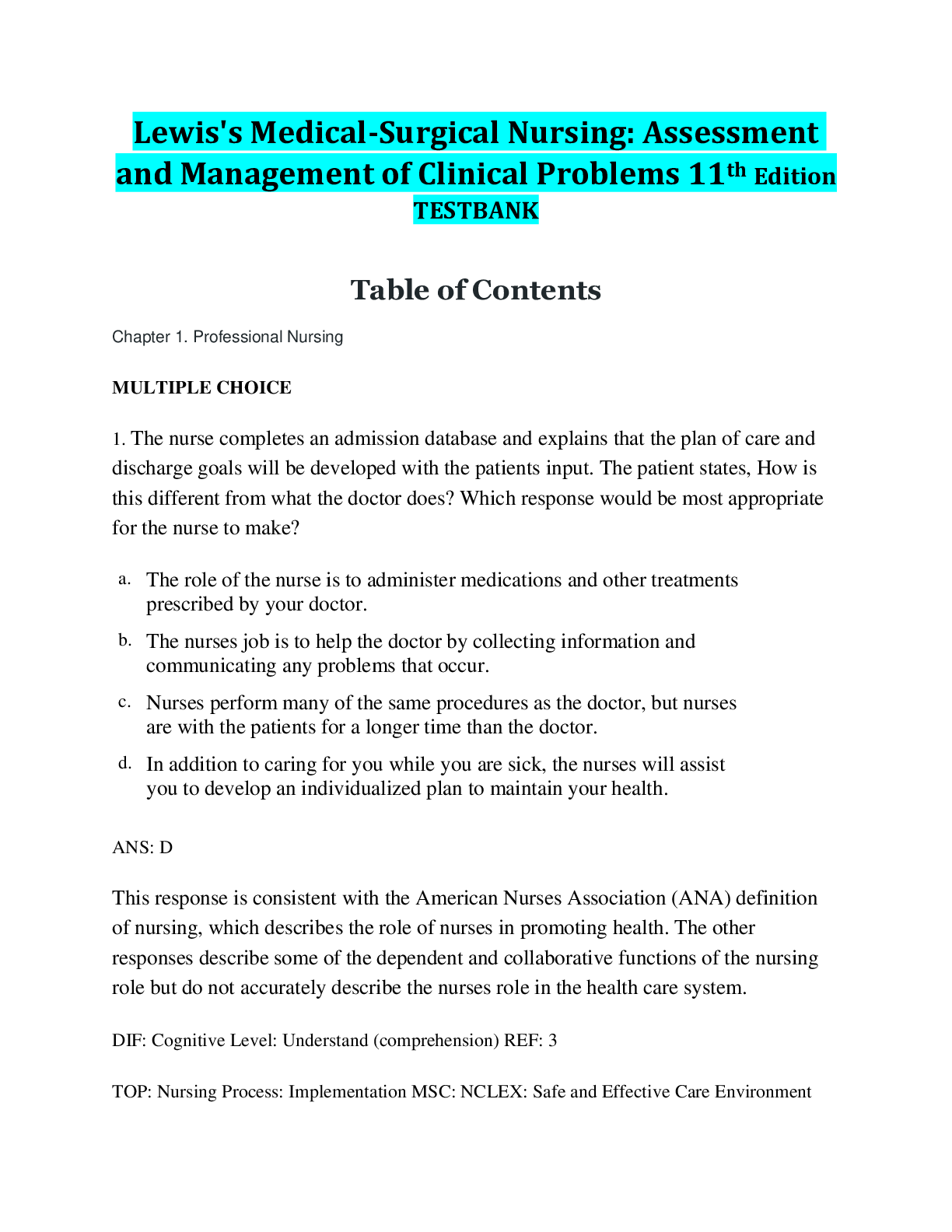
.png)


